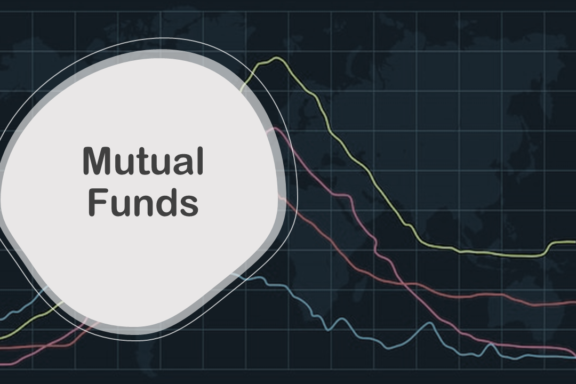Introduction
In the ever-evolving world of investing, staying ahead of market trends and adapting to changing conditions is crucial for maximizing returns. Traditional asset allocation strategies aim to achieve this balance by distributing investments across different asset classes based on predefined percentages. However, with the dynamic and ever-changing nature of financial markets, a more adaptive approach is required. One approach that has gained significant popularity in recent years is Dynamic Asset Allocation (DAA) funds. These funds offer investors a flexible and proactive investment strategy that aims to capitalize on market opportunities while managing risks effectively. In this article, we will explore the concept of dynamic asset allocation funds, their benefits, and how they adapt to market conditions to maximize investment returns.
What are Dynamic Asset Allocation Funds?
Dynamic asset allocation funds, also known as tactical asset allocation funds, are a type of investment fund that actively adjusts its portfolio allocation based on changing market conditions. Unlike traditional static asset allocation, where the proportions of assets remain fixed over time, dynamic asset allocation funds have the ability to shift investments across various asset classes such as stocks, bonds, cash, commodities, and alternative investments.
The key characteristic of dynamic asset allocation funds is their flexibility. Fund managers monitor market trends, economic indicators, and other relevant factors to determine the optimal allocation of assets. They use quantitative models, technical analysis, and fundamental research to make informed decisions regarding asset allocation. By actively responding to market movements, these funds aim to generate higher returns and mitigate downside risks.
The Role of DAA Funds
The primary goal of dynamic allocation funds is to achieve a balance between growth and income while managing risk. The asset allocation within the fund is not fixed but can vary based on the investment manager’s assessment of market conditions and opportunities. For example, during periods of economic growth and optimism, the fund manager may increase the allocation to stocks to capture potential capital appreciation. Conversely, during market downturns or uncertain times, the manager may reduce exposure to stocks and increase allocations to more conservative assets like bonds or cash to provide stability and preserve capital.
Benefits of Dynamic Asset Allocation Funds
Adaptability:
Dynamic asset allocation funds have the advantage of adaptability. In volatile market conditions, these funds can swiftly adjust their portfolios to take advantage of emerging opportunities or reduce exposure to potential risks. By actively managing asset allocation, the fund managers seek to maximize returns while minimizing losses.
Risk Management:
The ability to dynamically allocate assets enables these funds to manage risk more effectively. During periods of market downturns, the fund managers can reduce exposure to riskier assets and increase allocations to safer investments, such as bonds or cash. This approach aims to cushion the impact of market downturns and provide a more stable investment experience.
Potential for Higher Returns:
The dynamic nature of asset allocation allows these funds to capitalize on favorable market conditions. By actively shifting investments towards asset classes expected to outperform, dynamic asset allocation funds can potentially generate higher returns than static allocation strategies. The ability to capture upside potential and navigate market cycles can be advantageous for long-term investors.
Professional Management:
DAA funds are managed by experienced investment professionals who have the expertise and knowledge to make informed decisions. These professionals monitor market conditions, economic indicators, and other factors that influence asset performance, ensuring that the portfolio is optimized for returns.
Diversification:
DAA funds typically offer diversification across various asset classes, including stocks, bonds, commodities, and alternative investments. This diversification helps spread risk and reduces the impact of any single asset class on the overall portfolio.
Liquidity:
DAA funds usually provide high liquidity, allowing investors to buy or sell their holdings at any time. This feature provides flexibility for investors who may need to access their funds quickly or adjust their investment strategy based on changing circumstances.
How Do Dynamic Asset Allocation Funds Work?
Dynamic asset allocation funds employ a systematic approach to determine their asset allocation. Fund managers utilize a combination of quantitative models and qualitative analysis to assess market conditions, valuations, and economic indicators. Based on their analysis, they adjust the fund’s portfolio to overweight or underweight certain asset classes.
For instance, if the fund manager anticipates a bullish market, they may increase exposure to equities and reduce allocations to fixed income or cash. Conversely, if they anticipate a bearish market or signs of overvaluation, they may reduce equity exposure and allocate more towards defensive assets.
The frequency of portfolio adjustments varies among different funds. Some funds may make frequent changes based on short-term market movements, while others may follow a more strategic approach, adjusting allocations based on longer-term trends. Fund managers’ expertise and the fund’s investment strategy play a significant role in determining the frequency and extent of portfolio adjustments.
It’s important to note that dynamic asset allocation funds involve active management, which means investors should carefully evaluate the track record and expertise of the fund managers before investing. Performance can vary depending on the skill and market insights of the fund management team.
Conclusion
Dynamic asset allocation funds offer investors a flexible and proactive investment strategy that aims to maximize returns in a changing investment landscape. By actively adjusting asset allocation based on market conditions, these funds seek to capture opportunities and manage risks effectively. However, investors should carefully consider their risk tolerance, investment goals, and evaluate the track record of the fund managers before making investment decisions.
Read more about: Mutual Funds






5 Comments